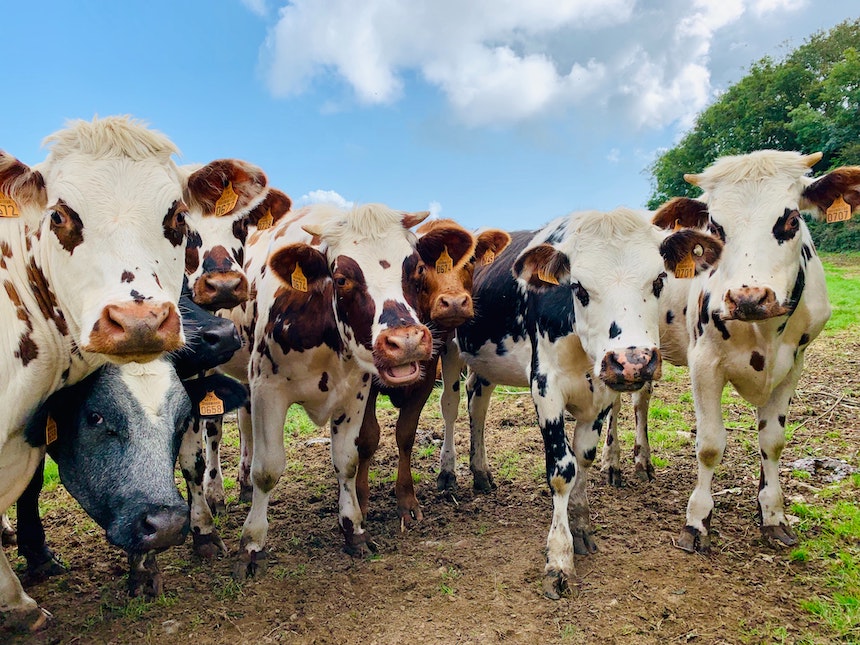D. E. Larsen, DVM
Old Mr. Nielsen sat on a stump by the head of the squeeze chute, watching me closely as I cut a length of OB wire and attached handles to each end. He was s short, stout Norwegian. He covered his thinning gray hair with a tattered old ball cap that sat a little crooked on his head. His weathered face and hands told of uncounted hours of labor in the outdoors. Mr. Nielsen had milked cows for years but now used his farm to raise replacement heifers.
“How do you spell your name, Doc?” He asked. Of all his questions, this was the most important one for him.
“I spell it with an ‘en,’ Larsen,” I replied. “My Grandfather was a Norwegian sea captain who sailed lumber ships on the West Coast.”
That satisfied his curiosity. I was new to Enumclaw, and I was surprised at how ethnic the community was around here. Dr. Larsen could mean Norway, Denmark, or Sweden. Now I would be in solid with the Norwegians.
“What are you going to do with that wire, Doc?” was his next question.
The old veterinarian in the practice, Jack, dehorned these older heifers with the old fashioned guillotine type dehorners. These were almost a medieval instrument, and I had no intention of using them. Four foot long wooden handles attached to a cutting head that was positioned over the base of the horn. When the handles were closed, the guillotine blade half cut and half crushed the horn off. Local anesthesia didn’t help much. Blood would fly, and the heifer would bellower. It did a terrible job, and partial regrowth of the horn was common due to the incomplete removal of the base of the horn.
“This is what I use to remove the horns. It is a wire saw. I think you will be impressed,” I replied.
I think he was less than convinced as we loaded the first heifer into the chute. We had a dozen heifers to dehorn today. They were all yearlings, I hoped I would hold up to this number, but I was young and robust and calculated that I could get the job done. With the head secured with nose tongs, I injected each horn base with Lidocaine for local anesthesia. I seated the OB wire at the base of the horn. Then I started with long, rapid strokes. Smoke rose from the horn as the wire engaged the bone. It smelled like the old, slow dental drills. The process was brief, there was no apparent pain, and no blood as the hot wire seared the vessels. I grasped the exposed arteries with a forceps and pulled them slowly until they broke deep in the tissues and snapped back. This would allow a secure clot to form, and there would be almost no bleeding.
I repeated the process on the second horn. Then I applied some antibiotic powder on the wounds and into the open frontal sinus. The open frontal sinus made an impressive wound that alarmed the neophytes, but Mr. Nielsen had seen it many times before. After applying a good spray for flies, I released the nose tongs. Then I went back and sprayed the switch of her tail. Out of the chute, she ran, no pain, only a drop of blood and standing out in front of the chute like nothing had happened.
“That is a pretty neat wire you have there. I think I like it, and that heifer acts like nothing happened,” Mr. Nielsen added. Obviously pleased with the job.
“Why did you spray her tail?” Mr. Nielsen asked.
“Just to make it a little more effective against the flies,” I said.
The other heifers that followed were completed with an identical procedure. I changed the wire saw after every heifer to ensure the speed of the cut was not slowed by a dull wire. The last couple of heifers bled a little more as my strokes became a little slower, and the OB wire failed to sear the arteries. Even then, the bleeding was quickly controlled when the arteries were pulled.
“This is so much better of a job than what that big old lopper does,” Mr. Nielsen said.
After cleaning things up, I headed back to the clinic.
When Don, the other veterinarian in the practice, came in that afternoon, he had already heard the story of my dehorning job.
“I think you are going to be doing our dehorning from now on. Old Mr. Nielsen has told almost everyone about the job you did this morning,” Don said. “And your Grandfather’s story didn’t fall on deaf ears either. I think all the Norwegians will be lined up at the front door pretty soon.”
Photo by Lomig on Unsplash

A great story. We enjoy the history you are sharing with us.
LikeLike
I agree, these are wonderful stories you are sharing with readers. Keep them coming.
LikeLike
I love these stories ! Thank you for sharing
LikeLike
Good seeing you tonight, Larry. Hardest part of retirement is losing contact with long time clients.
LikeLike
So enjoy your stories. Hope you are enjoying your retirement but, sure miss you.. Ben and Wanda McKillop
LikeLike